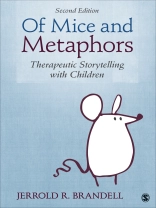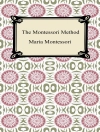Allegories, fables, myths, legends, and other time-honored forms of storytelling have been used since the beginning of recorded history to convey important values and moral precepts to the young. Storytelling comes naturally to children, and also offers them an unparalleled means through which they may express the fantasies, anxieties, and conflicts of their inner lives.
In
Of Mice and Metaphors, Second Edition, psychoanalyst and child treatment specialist Jerrold R. Brandell introduces a variety of dynamic strategies for therapists to understand and incorporate a child’s own creative story-narrative into an organic and reciprocal treatment process leading to therapeutic recovery and healing. Engaging case histories encompassing a wide spectrum of childhood problems and emotional disorders are used to illustrate complex, effective strategies that include actual clients’ stories and the author’s response to their narratives.
Mục lục
A Prefatory Note
Prologue
Chapter 1: Stories and Reciprocal Storytelling in Dynamic Child Psychotherapy
Children′s Stories: An Overview of the Literature
What Is Reciprocal Storytelling?
When Is Reciprocal Storytelling Useful and with Which Patients?
Eliciting the Child′s Story
The Lesson or Moral
Poststory Discussion
The Therapist′s Role in the Storytelling Process
What Are the Most Important Components of Children′s Stories?
Which Theoretical Frameworks Are Compatible with Reciprocal Storytelling?
The Case of Tony
Summary
Discussion Questions
Chapter 2: Autogenic Stories, Projective Drawings, and the Clinical Assessment Process
The Case of Sean
The Case of Robert
The Case of David
The Case of Carl
Using Squiggle Drawings in Conjunction with Diagnostic Stories
The Case of Danny
The Case of Annie
The Case of Derek
Stories Used for Evaluative Purposes
Summary
Discussion Questions
Chapter 3: Narrative and Historical Meaning in Child Psychotherapy
Historical and Narrative Discourse: Theoretical Perspectives
Clinical Assessment in Child Psychotherapy: The Cultivation and Synthesis of ‘Data’
The Narrative Discourse in Child Psychotherapy
Autogenic Stories: Royal Road to the Child′s Narrative
The Case of Jed
Summary
Discussion Questions
Chapter 4: Applications to Special Clinical Issues and Problems of Childhood
The Case of Sean, Revisited: Responding to an Environmental Crisis
The Case of Naima: Severe Separation Anxiety in a 7-Year-Old Transracial Adoptee
The Case of Roberta: Depletion Depression in a Biracial Child
Storytelling with a Borderline Child: Therapeutic Considerations
The Case of Harry
Summary
Discussion Questions
Chapter 5: The Unfolding of the Narrative in the Psychotherapy of a Traumatized 10-Year-Old Boy
Treatment Considerations
The Case of Nathan
Summary
Discussion Questions
Chapter 6: Transference Dimensions of the Storytelling Process
Historical and Contemporary Perspectives
The Case of Mattie: Illustration of a Selfobject Transference
Countertransference Phenomena
Summary
Discussion Questions
Chapter 7: Secrecy and Trauma: An Adopted Child′s Psychotherapy
Pertinent History
Bruce’s Treatment Begins
‘The Snake That Came Out of the Hole’
‘The Ghost with a Conscience’
‘The Boy Who Felt Like a Ghost’
‘The Bird That Never Laughed’
Countertransference Themes in Bruce′s Treatment
Conclusion and Further Reflections
Discussion Questions
Chapter 8: What Else Can Stories Tell Us? Using Children′s Metaphorical Communications as a Measure of Therapeutic Progress
The Case of John
Summary
Discussion Questions
Epilogue
Appendix
References
Index
About the Author
Giới thiệu về tác giả
Jerrold R. Brandell, Ph.D., BCD is Distinguished Professor and Coordinator, Doctoral Concentration in Clinical Scholarship, Wayne State University School of Social Work (Detroit), where he has taught since 1992. He has held visiting professorships at the Zurich Höchschule für Angewandte Wissenschaften (Switzerland), Lund University (Sweden) and the University of Canterbury (New Zealand), and has led workshops and lectured widely on clinical topics in the United States and abroad. A practicing child, adolescent, and adult psychotherapist, and psychoanalyst, he is the author or editor of twelve books, including Countertransference in Psychotherapy with Children and Adolescents (1992). Psychodynamic Social Work (Columbia, 2004), and Essentials of Clinical Social Work (2014). He is the (Founding) Editor of Psychoanalytic Social Work, and also serves on several other editorial boards. Recognized as a distinguished practitioner by the National Academies of Practice, he maintains a part-time practice in psychoanalysis and psychotherapy in Ann Arbor, Michigan.












